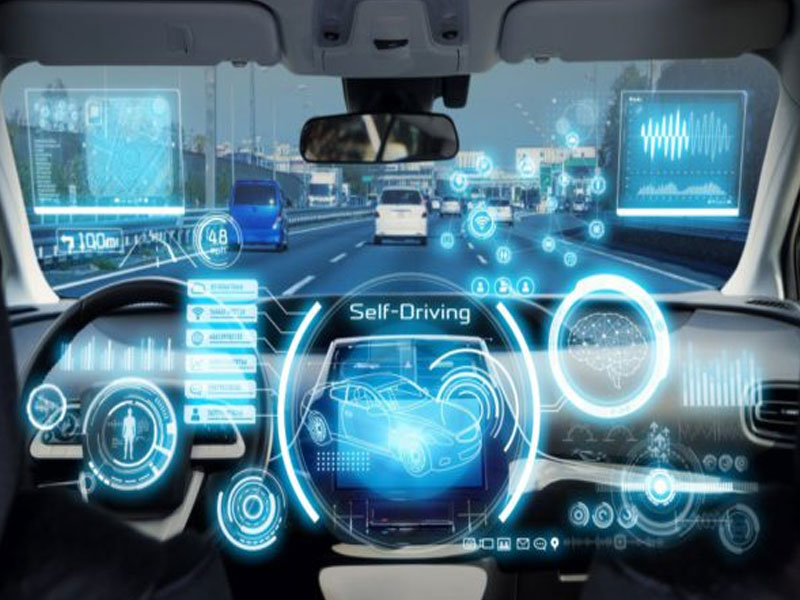Digital twins on the manufacturing menu – with help from the hyperscalers
SOURCE: HTTPS://WWW.IOTTECHNEWS.COM/
NOV 16, 2023
Industry expert: No company can manage autonomous driving on its own
SOURCE: MARKETRESEARCHTELECAST.COM
OCT 03, 2021

Even big players in the field of highly automated driving functions such as Waymo or Tesla will not be able to put a safe robo-car with the associated operating scenarios on the road on their own. At least that’s what Edzard Overbeek, head of Here Technologies, assumes. “We need an ecosystem”, he emphasized on Wednesday at a conference of the industry alliance “The Autonomous” in Vienna. “No company can deliver all of this on its own.”
Millions of networked cars and sensors on the streets already provided a huge amount of real-time information, Overbeek justified his thesis. In 30 years, humanity will probably no longer be able to maintain its prosperity without things that act autonomously. To control these, the best data sets, algorithms and systems for artificial intelligence (AI) are necessary. The cooperation especially between partners from the auto and IT industry is therefore “the crucial point”. Especially since the work on a greener planet and a climate-neutral economy still has to be taken into account. This is more important than the dispute over the question of “whether the car takes the right turn”.
Here itself started as a map service, but now sees itself as a specialist in instructions for things like robots and vehicles in the networked world, the manager reported. “We have the largest set of geospatial data in the world.” However, a single company will never have enough metrics and information “to be a leader in AI”. In the Here universe alone, around 200 companies are already working together to create a digital representation of physical reality. High-definition video images almost in real time are only one step away.
According to Overbeek, such a digital twin of the surrounding world helps in traffic and urban planning, for example, to set up future bus routes or repair roads as required. Amazon and other e-commerce giants also need accurate real-time situation images in order to design delivery options in the best possible way. Here has the “largest 3D database for cities” and wants to act as a neutral trustee for it. In return for access to the platform, the affiliated partners should share the income generated from it fairly.
The insider also described the change to a common industrial ecosystem, as The Autonomous wants to promote, as a cultural challenge for the IT industry, as it has to “step out of its monolithic development building”. Data centers have shown the way and are now using 60 to 70 percent of their software solutions on open source. Since cars are also small, changing data centers, open approaches also lead to faster progress here.
Simon Fürst, an expert on autonomous driving at BMW, also described open source as crucial, whereby in addition to the new forms of collaboration it made possible, he also had IT security in mind. According to him, proprietary systems in the car can no longer be checked and tested individually, while the community completes the hardening process very quickly with free software such as Linux. Christoph Hartung, head of the Bosch subsidiary ETAS, also sees “great open source potential”. This is the best way to guarantee protection for the entire environment in the car.
Lars Reger, chief technician at NXP Semiconductors, referred to an open hardware consortium for RISC processors that the chip industry has partly adopted the approach. There is also pressure from the Asian market, where China in particular wants to become independent from the USA. As the best protection against cyber attackers, he identified “beautiful” and “cleaned up” architectures, the functions of which are the easiest to survey.
The semiconductor industry can learn from the banking sector, said Infineon boss Reinhard Ploss. In the area of ??security, some things can be transferred from smart cards such as bank and credit cards to cars. Relevant chip cards have also been cracked many times. Ploss advised that networked vehicles should be geared towards post-quantum cryptography, as they should usually drive for many years. The first relevant autonomous systems might then be over-the-top. But this is better than having to say “Sorry” later.
Producers would need a lot of data from the car directly and from the environment in order to make autonomous driving safe, said Georges Massing, who is responsible for this field at Mercedes-Benz, compliant with Overbeek. However, there are still many unanswered legal and cultural questions, since “appropriate” driving behavior is assessed quite differently in Paris, for example, than in Germany. The Daimler brand is therefore only bringing a certified system for highly automated driving (level 3) onto the market in certain countries “that can tell us: ‘that’s right, that’s wrong'”. In the United States, this only applies to California and Nevada.
Trent Victor presented the “holistic approach” to security at Waymo. The department head at the Google sister company said that after driving several million kilometers, the company’s robo-cars could have avoided 100 percent of 72 fatal accidents between 2008 and 2017 that the company had reconstructed. Even if collisions had been inevitable, they would have resulted in serious injuries up to 15 times less often. In principle, Waymo relies on a combination of tests on the road and computer simulations in the run-up to pilot operations of robo-taxis such as in Phoenix. The driving behavior of “a highly qualified person” is used for comparisons.
(mho)
LATEST NEWS
Augmented Reality
Hi-tech smart glasses connecting rural and remote aged care residents to clinicians
NOV 20, 2023
WHAT'S TRENDING


Data Science
5 Imaginative Data Science Projects That Can Make Your Portfolio Stand Out
OCT 05, 2022

SOURCE: HTTPS://WWW.IOTTECHNEWS.COM/
NOV 16, 2023
SOURCE: HTTPS://AITHORITY.COM/
OCT 03, 2023
SOURCE: HTTPS://WWW.SCIENCEDAILY.COM/
AUG 08, 2023
SOURCE: HTTPS://WWW.GLOBALLOGIC.COM
JUL 06, 2023
SOURCE: HTTPS://INDIAAI.GOV.IN/ARTICLE/HOW-DIGITAL-TWIN-TECHNOLOGY-WILL-EVOLVE-IN-2023
JUL 04, 2023
SOURCE: HTTPS://WWW.CNBC.COM/2023/01/21/DIGITAL-TWINS-ARE-SET-FOR-RAPID-ADOPTION-IN-2023.HTML
JUN 30, 2023